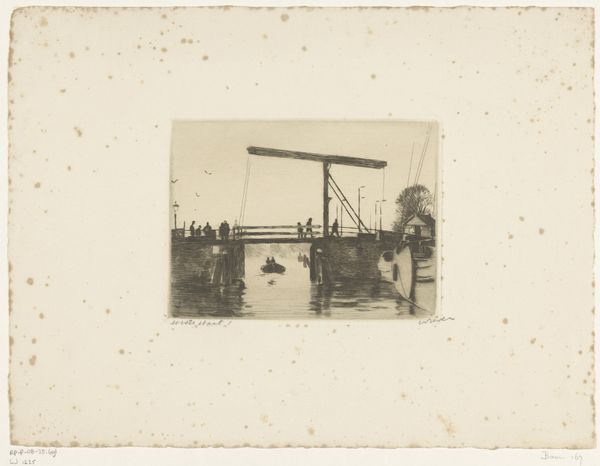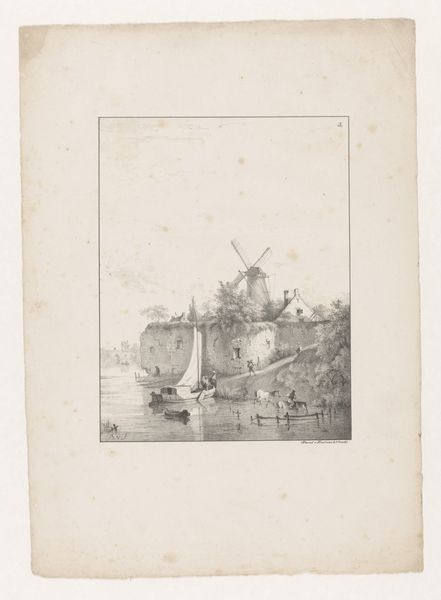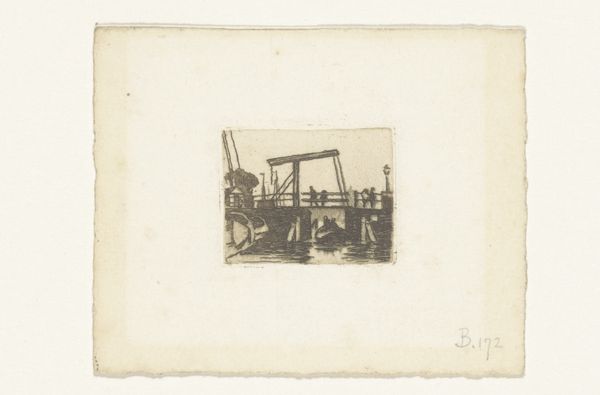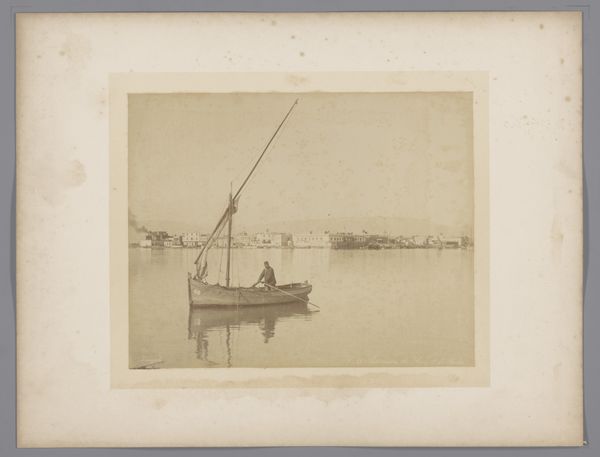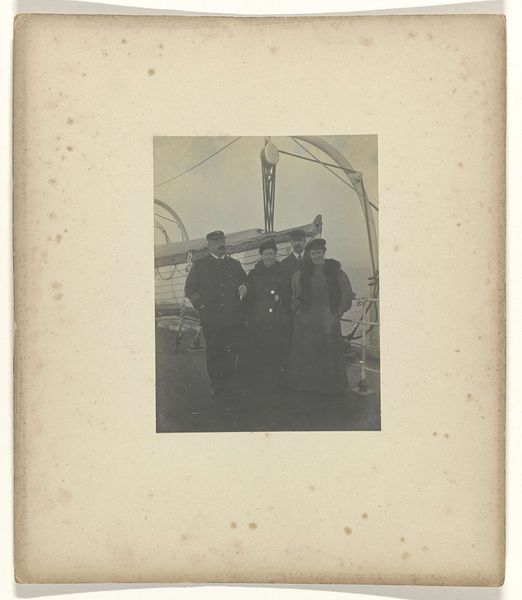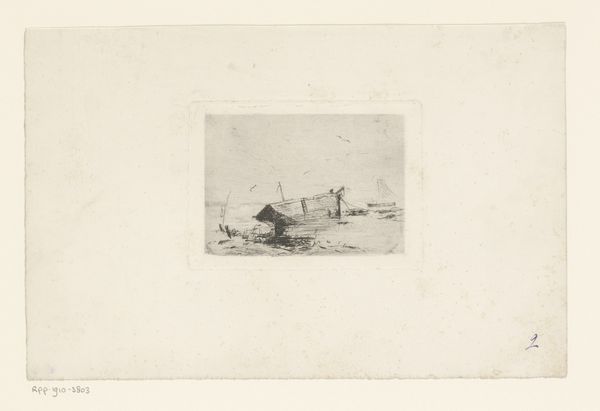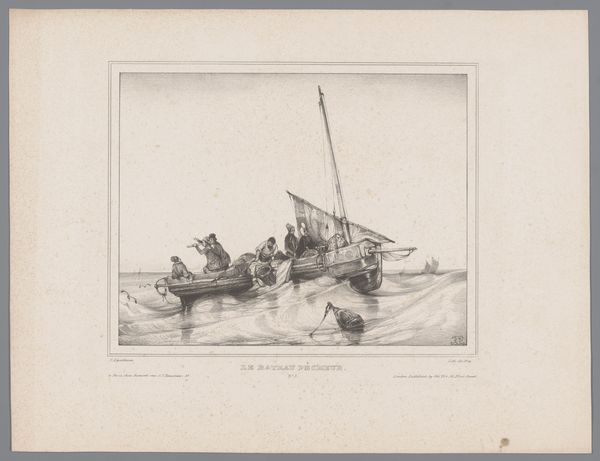
print, etching
# print
#
impressionism
#
etching
#
landscape
#
cityscape
Dimensions: height 197 mm, width 139 mm
Copyright: Rijks Museum: Open Domain
Willem Witsen made this etching, *Ophaalbrug en schip in de mist*, using a copper plate to capture a misty scene of a bridge and ship. The magic of etching lies in its process: the plate is covered with a waxy, acid-resistant layer, through which the artist scratches an image. When the plate is bathed in acid, the exposed lines are eaten away, creating grooves. Ink is then applied, filling these lines, and the plate is pressed onto paper, transferring the image. Witsen masterfully exploits these techniques, creating soft, blurred forms suggesting the damp atmosphere and the scene’s grittiness. The choice of subject matter is interesting, too. Rather than pastoral scenes, Witsen focuses on the industrial aspects of Amsterdam. The emphasis on infrastructure – bridges, ships, and presumably the labor required to operate them – speaks to the social realities of his time. By understanding the material processes behind this print, we realize it isn't just a pretty picture, but a document of a specific time, place, and the labor that sustained it.
Comments
No comments
Be the first to comment and join the conversation on the ultimate creative platform.
